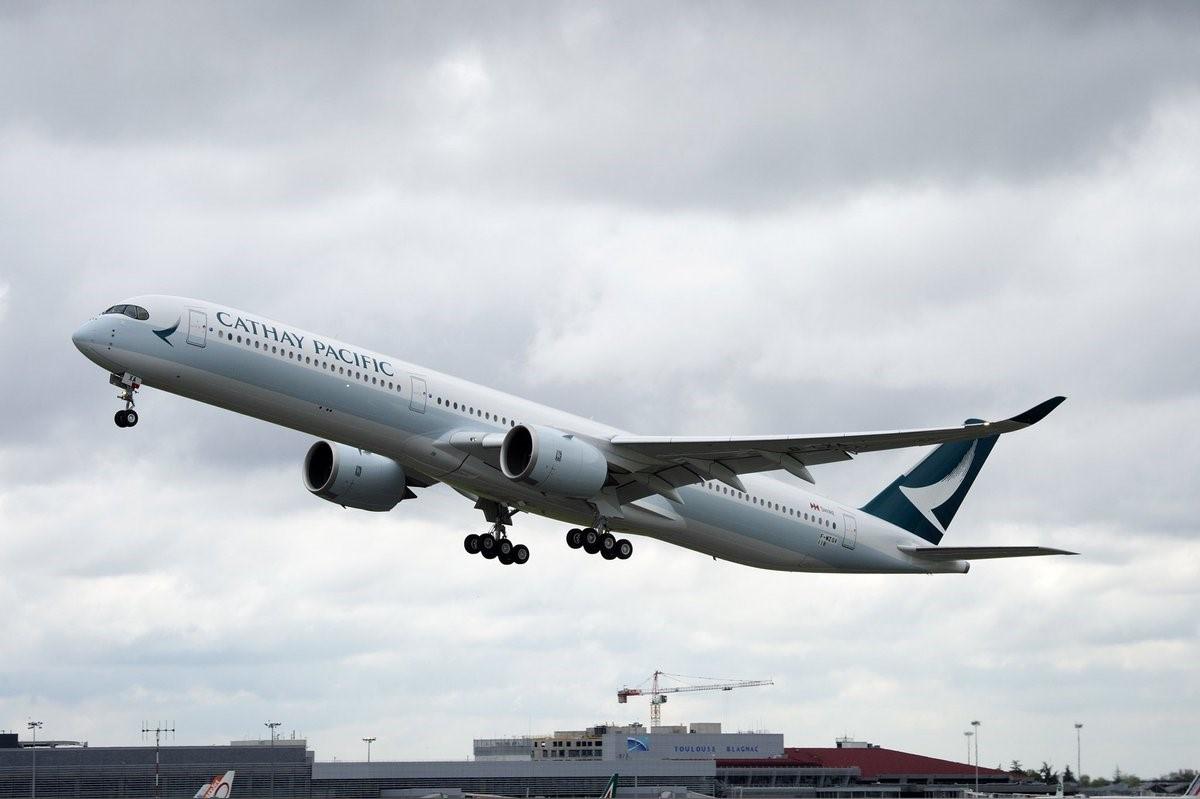Rampant growth has prompted some carriers to boost their maindeck capacity through freighter leases, and orders for widebody cargo planes are up as well lately. Notwithstanding strong growth, Cathay Pacific is not going to ramp up its maindeck lift in the foreseeable future.
Cargo remains the bright spot for the Hong Kong-based carrier. Whereas passenger growth slightly lagged the airline’s rise in seat capacity in the first two months of 2018, the momentum in cargo continued to outstrip the growth in available capacity during the period. Volume surged 10.3 percent and revenue ton-kilometres climbed 9.5%, well above a 5.1% increase in available ton-kilometres. Cathay’s load factor went up 2.6%.
The contrast in the airline’s result was even starker on the balance sheet for 2017, which showed a net loss of HK$1.25 billion (US$159.2 million) for the Cathay Group (which includes Cathay Dragon), double the deficit recorded the year before. Passenger revenue declined 0.8%, whereas seat capacity was up 2.8%. Cargo, on the other hand, showed 10.9% growth in tonnage and revenue advanced 19.1%, sending yield up 11.3%.
Nelson Chin, general manager cargo, commercial, said that the start into 2018 brought further growth both in terms of tonnage and yield improvement. This matches with comments from other carriers, which have reported ongoing growth in their cargo business.
Cathay’s European routes have been particularly buoyant, showing “amazing load factors,” and the growth has been strong in both directions, Chin said.
The trans-Pacific market has also grown in both directions, although eastbound flows and yields are still well above westbound levels. In recent years Cathay has focused much on its trans-Pacific business and on intra-Asian growth, where India has been one particular driver.
![Self Photos / Files - CX748 [4] Self Photos / Files - CX748 [4]](/Upload/news/2602/self/21dec3d166994328903f16191ba77b5a.jpg)
Cathay responded to the growth in the market last year with a wet-lease of two Boeing 747-8 freighters from Atlas Air to supplement its own maindeck capacity. In the main, these aircraft have been used on trans-Pacific sectors, but also to India. According to Chin, the arrangement has worked well.
“The ACMI agreement that we have continues strong,” he said, adding that this partnership looks set to continue for the foreseeable future, likely for a few years.
That said, Cathay has no intention of bringing in further freighter capacity at this point. It currently operates 20 747 freighters.
“We are quite happy with the capacity we have,” commented Chin, adding that the main objective at the moment is to push up the utilization of the cargo planes.
“It’s more about getting efficiencies out of the network and improving productivity,” he said.
This stance extends to regional freighter activities. Some time ago management had considered the use of Airbus A330 freighters for regional operations to supplement belly lift on intra-Asian routes, but this is not an option today.
“The A330 freighter is not on the table, but of course we’ve got Air Hong Kong,” said Chin. “We will see how the Air Hong Kong model can further complement the rest of the Cathay Group.” Cathay took over DHL’s 40% stake in Air Hong Kong last year, but the integrator continues to use the carrier under a long-term capacity agreement.
Going forward, Cathay’s management is looking to the growth of its passenger fleet to boost cargo capacity. The airline is revamping its fleet with A350 aircraft, bringing in altogether 28 A350-900s and 20 A350-1000s.
These planes can take as much as 30 tons of cargo, Chin noted. He added that the passenger fleet growth will allow the cargo division to expand its network, which should help attract e-commerce business. “With e-commerce, frequency and network are relatively important,” he said.

Beyond its own capacity, Cathay is looking to interline partners to reach markets outside its network. South America and Africa are major targets there, notwithstanding the planned launch of its own passenger flights to Cape Town that are scheduled to take off in November.
The joint venture with Lufthansa is another major element in the network puzzle. According to Chin, this has gone well so far. “It has allowed both airlines to expand our offerings,” he said.
Cathay’s position on freighter investment is not unique at the moment. Richard Greener, senior vice-president and manager of the cargo aircraft group at leasing giant GECAS, noted that airline boards are cautiously optimistic about cargo but remain wary after the long downturn that cargo suffered until last year.
And while the mood in the air cargo industry remains upbeat, there are causes for caution.
“There are a lot of unknowns out there,” Chin said. Above all, he was referring to the spectre of a trade war between China and the US. It remains to be seen how this plays out and what it means in terms of air freight, he said.
A downturn in flows between China and the US would impact Cathay, although much of its business is in other trade lanes. “We are a network carrier,” Chin stressed. Cathay has seen strong growth in transhipments, he noted.
For now, the outlook remains upbeat, but not to the point of taking on additional freighters.
By Ian Putzger
Air Freight Correspondent | Toronto